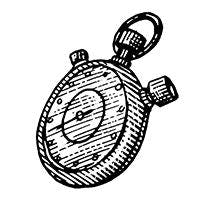Episodes
New evidence points to the evolution of the ability for bacteria to grab nitrogen from the atmosphere some 3.2 billion years ago, about 1.2 billion years earlier than thought—with implications for finding extraterrestrial life. Lee Billings reports
Published 02/23/15
Published 02/19/15
A dwarf galaxy near the Milky Way may consist of more dark matter than regular matter.* Clara Moskowitz reports
Published 02/17/15
NASA has to deal with the unexpected financial consequences of robotic missions that just keep going. Lee Billings reports
Published 02/10/15
The oldest group of terrestrial worlds now known formed some 11.2 billion years ago, more than six billion years before our sun and planets. Clara Moskowitz reports
Published 02/02/15
New images from a NASA orbiter reveal Beagle 2’s final resting place. Lee Billings reports
Published 01/26/15
Australian amateur astronomer Terry Lovejoy’s latest comet find is naked-eye visible in the southeast sky until January 24. Clara Moskowitz reports
Published 01/16/15
The company hopes to send up a Falcon 9 rocket and then safely land the discarded first stage for reuse. Lee Billings reports
Published 12/31/14
John Grunsfeld, the former astronaut who now heads NASA’s Science Mission Directorate, thinks that traveling light could get people to Mars by the 2040s
Published 12/10/14
Jupiter's Great Red Spot is its particular crimson shade because of the interaction of ultraviolet light and specific chemical compounds in the gas giant's atmosphere. Lee Billings reports
Published 12/01/14
Over the summer researchers identified seven specks of dust returned to Earth by the Stardust spacecraft. But determining their true origin has been difficult. Clara Moskowitz reports
Published 11/21/14
The Rosetta spacecraft has unexpectedly detected hydrogen sulphide and ammonia coming from Comet Churyumov-Gerasimenko. Lee Billings reports
Published 11/04/14
Take part in a citizen-science project by helping researchers track high-energy cosmic rays via a network of smartphone users. Clara Moskowitz reports
Published 10/17/14
Astronomers have discovered one of the largest and most complex organic molecules yet in a gaseous star-forming region of interstellar space. Clara Moskowitz reports
Published 10/09/14
Data from the International Space Station-based Alpha Magnetic Spectrometer experiment supports the idea that dark matter consists of the invisible particles called weakly interacting massive particles, or WIMPs. Clara Moskowitz reports
Published 09/24/14
Texas State University astronomer Donald Olson combined solar, tidal and weather data to identify the likely moment of the image in the Monet work Impression, Sunrise
Published 09/11/14
Published 09/04/14
Published 08/24/14
Published 08/13/14
Published 07/25/14
Published 07/09/14
Published 07/02/14
Published 06/23/14
Published 06/16/14
Published 06/02/14


